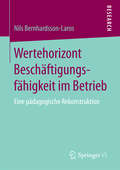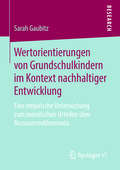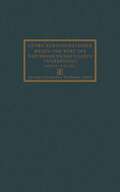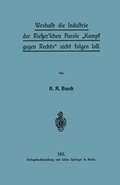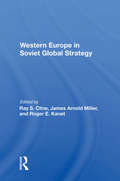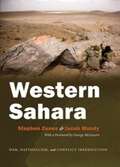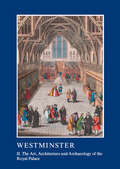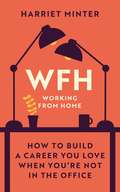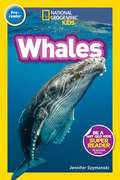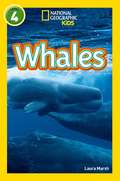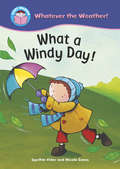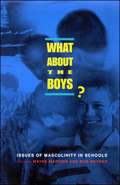- Table View
- List View
Wertehorizont Beschäftigungsfähigkeit im Betrieb: Eine pädagogische Rekonstruktion
by Nils Bernhardsson-LarosNils Bernhardsson-Laros zeigt in seiner qualitativ-rekonstruktiven Studie, dass eine betriebliche Rekonstruktion des Employability-Konzeptes nur gelingen kann, wenn die Beschäftigten einbezogen und dabei unterstützt werden, es mit ihrem je spezifischen Konzept des „guten Lebens“ zu verbinden. Um Betriebsangehörige in diesen Prozessen zu unterstützen, bedarf es einer pädagogischen Erweiterung des Employability-Konzeptes. Die Studie begründet eine Methode, die in der Organisationsforschung und -beratung eingesetzt werden kann, um auf Employability bezogene Wertehorizonte sichtbar, kommunizierbar und überprüfbar zu machen.
Werteorientierte Medienpädagogik: Das Präventionsprojekt 'Medienscout'
by Bojan Godina Harald Grübele Kurt W. SchönherrMit dem Präventionsprojekt ,Medienscout’, das im Kontext der Aufarbeitung des Amoklaufs in Winnenden weiterentwickelt wurde, wird der Versuch einer neuen Werteorientierung unternommen. In konsequenter Orientierung an Menschenrechten entsteht eine medienpädagogische Werttheorie, die hier vorgestellt wird. Der Band führt in eine medienpädagogische Grundlegung ein und zeigt in den Praxisbeschreibungen, wie diese im Umfeld des Projekts in Winnenden und auch darüber hinaus umgesetzt werden.
Werthaltungen von Lehrkräften in der Erwachsenenbildung: Eine rekonstruktive Studie
by Nadja SchwendemannNadja Schwendemann untersucht in ihrer qualitativ-rekonstruktiven Studie die Lehrpraxis von Dozierenden in der Erwachsenenbildung und fragt nach den zugrundeliegenden Werten. Dabei zeigen sich biografische, fachkulturelle und organisationale Handlungsbezüge sowie Wertekonflikte, die für die Lehrpersonen selbst schwer zu reflektieren sind. Die Ergebnisse machen deutlich, dass implizites normatives Handeln als Normalität erwachsenenbildnerischen Lehrens angenommen werden muss. Die neu gewonnenen Erkenntnisse liefern wichtige Grundlagen für die Professionalitätsdebatte und den Normativitätsdiskurs in der Erwachsenenbildung und Erziehungswissenschaft.
Wertorientierungen und organisationale Werte in Laufbahnen: Eine rekonstruktive Studie in einem Finanzdienstleistungsunternehmen
by Katharina AgostiniKatharina Agostini untersucht in dieser qualitativ-rekonstruktiven Studie die Bedeutsamkeit von Wertorientierungen und organisationalen Werten für das Alltagshandeln von Akteuren und Akteurinnen eines öffentlich-rechtlichen Finanzdienstleistungsunternehmens. Die Autorin setzt verschiedene theoretische Sichtweisen in Bezug zueinander und eröffnet Perspektiven auf handlungspraktische, organisationale sowie geschlechts-, hierarchie- und laufbahnbezogene Aspekte. Die Ergebnisse aus qualitativen Interviews mit Mitarbeitenden und Führungskräften liefern einen wichtigen Beitrag für den Diskurs um die Bedeutung individueller Wertorientierungen sowie organisationaler Werte im Kontext beruflichen Handelns und Erlebens.
Wertorientierungen von Grundschulkindern im Kontext nachhaltiger Entwicklung: Eine empirische Untersuchung zum moralischen Urteilen über Ressourcendilemmata
by Sarah GaubitzSarah Gaubitz geht der Frage nach, an welchen Werten sich Grundschulkinder am Ende der vierten Klasse zu Ressourcendilemmata und somit den Kernproblemen des globalen Wandels orientieren, und wie sie ihre Urteile begründen. Es gelingt der Autorin, individuelle Schülervorstellungen, Wertorientierungen und daraus entstehende Vernetzungen sowie moralische Begründungen der interviewten Kinder mit Hilfe von Dilemma-Interviews zu ermitteln. Sie belegt, dass diese bereits einen dringenden Handlungsbedarf sehen, ein breites Spektrum an Handlungsoptionen für den Umgang mit den Ressourcendilemmata benennen und diese gegenüberstellen und abwägen können. Die Ergebnisse werden von der Autorin in Typen von Wertorientierungen überführt.
Wesen und Wert des naturwissenschaftlichen Unterrichtes
by Georg KerschensteinerDieser Buchtitel ist Teil des Digitalisierungsprojekts Springer Book Archives mit Publikationen, die seit den Anfängen des Verlags von 1842 erschienen sind. Der Verlag stellt mit diesem Archiv Quellen für die historische wie auch die disziplingeschichtliche Forschung zur Verfügung, die jeweils im historischen Kontext betrachtet werden müssen. Dieser Titel erschien in der Zeit vor 1945 und wird daher in seiner zeittypischen politisch-ideologischen Ausrichtung vom Verlag nicht beworben.
Weshalb die Industrie der Rießer'schen Parole „Kampf gegen Rechts“ nicht folgen soll
by H. A. BueckDieser Buchtitel ist Teil des Digitalisierungsprojekts Springer Book Archives mit Publikationen, die seit den Anfängen des Verlags von 1842 erschienen sind. Der Verlag stellt mit diesem Archiv Quellen für die historische wie auch die disziplingeschichtliche Forschung zur Verfügung, die jeweils im historischen Kontext betrachtet werden müssen. Dieser Titel erschien in der Zeit vor 1945 und wird daher in seiner zeittypischen politisch-ideologischen Ausrichtung vom Verlag nicht beworben.
The West Indian Language Issue in British Schools: Challenges and Responses (Routledge Revivals)
by Viv EdwardsFirst published in 1979. The performance of West Indian children in British schools has been the subject of enquiries by both a parliamentary select committee and the Department of Education. It is widely believed that an important factor in the relative failure of West Indian children is the language they use, West Indian Creole, and while teachers and others who work with them are aware that their language is often very different from British English, they seldom understand the nature of the differences, or their implications. The aim of this book is to provide the non-specialist with an account of the language of West Indian children and to examine how linguistic ‘interference’ can affect their level of reading, writing and understanding, even when they have been born in Britain. It also considers the worrying possibility that negative attitudes towards them and their language may have an adverse effect on their motivation to learn standard English. Viv Edwards places great stress on the fact that, although Creole is different from British English, it is in no way deficient as a language. She emphasizes the importance of familiarity with the structure of Creole, since it is only in this way that the teachers can discriminate between real mistakes and Creole ‘interference’. Attention is drawn to the relationship between language attitudes and social stereotypes and the danger that these might be translated into reality. Different strategies available to the teacher are examined, drawing on American experience in this field, and various initiatives taken by British teachers are described, thus making the study a work of practical value to teachers and others.
The West Indian Language Issue in British Schools: Challenges and Responses (Routledge Revivals)
by Viv EdwardsFirst published in 1979. The performance of West Indian children in British schools has been the subject of enquiries by both a parliamentary select committee and the Department of Education. It is widely believed that an important factor in the relative failure of West Indian children is the language they use, West Indian Creole, and while teachers and others who work with them are aware that their language is often very different from British English, they seldom understand the nature of the differences, or their implications. The aim of this book is to provide the non-specialist with an account of the language of West Indian children and to examine how linguistic ‘interference’ can affect their level of reading, writing and understanding, even when they have been born in Britain. It also considers the worrying possibility that negative attitudes towards them and their language may have an adverse effect on their motivation to learn standard English. Viv Edwards places great stress on the fact that, although Creole is different from British English, it is in no way deficient as a language. She emphasizes the importance of familiarity with the structure of Creole, since it is only in this way that the teachers can discriminate between real mistakes and Creole ‘interference’. Attention is drawn to the relationship between language attitudes and social stereotypes and the danger that these might be translated into reality. Different strategies available to the teacher are examined, drawing on American experience in this field, and various initiatives taken by British teachers are described, thus making the study a work of practical value to teachers and others.
Western Education and Political Domination in Africa: A Study in Critical and Dialogical Pedagogy
by Magnus O. BasseyThe contribution of Western education to the creation of an African-educated elite is well documented. What is not equally well documented is the fact that African-educated elites have used their education and the schools to perpetuate their dominance by denying the poor the knowledge necessary to protect their political and economic rights and to advance in society. On the other hand, educated elites in Africa make opportunities available to their own members through selective ordering, legitimization of certain language forms and learning processes in schools, and legitimization of elite codes and experiences to the exclusion of the histories, experiences, and worldviews of the poor.This book highlights the processes by which the poor in Africa have been disenfranchised and marginalized through schools' ascriptive mechanisms, and explains why African economic development is very slow.
Western Europe In Soviet Global Strategy
by Ray S. ClineSoviet global strategy, long established and well understood by the Kremlin leaders, is to intimidate weak and fearful governments, exploit indigenous difficulties, disrupt social order, and promote communist revolutions. In this volume, European and American scholars describe the USSR's land and sea targets on and surrounding West Europe, where t
Western Europe In Soviet Global Strategy
by Ray S. ClineSoviet global strategy, long established and well understood by the Kremlin leaders, is to intimidate weak and fearful governments, exploit indigenous difficulties, disrupt social order, and promote communist revolutions. In this volume, European and American scholars describe the USSR's land and sea targets on and surrounding West Europe, where t
The Western European Idea in Education (International Studies in Education and Social Change)
by V. MallinsonA textbook on education in Western Europe, this book is designed for students of both education and European studies. It compares and contrasts education ideals and practice and cultural aspirations in different countries and generations and then goes on to consider how Western Europe will react to future challenge and change - both from within and beyond its own confines
Western Perspectives on Soviet Education in the 1980s (Studies in Russia and East Europe)
by J. J. TomiakWestern Sahara War, Nationalism, and Conflict Irresolution: Syracuse Studies on Peace and Conflict Resolution (PDF)
by Stephen Zunes Jacob MundyWestminster Part II: The Art, Architecture and Archaeology of the Royal Palace (The British Archaeological Association Conference Transactions)
by Warwick Rodwell Tim Tatton-BrownWestminster came into existence in the later Anglo-Saxon period, and by the mid-11th century, when Edward the Confessor’s great new abbey was built, it was a major royal centre two miles south-west of the City of London. Within a century or so, it had become the principal seat of government in England, and this series of twenty-eight papers covers new research on the topography, buildings, art-history, architecture and archaeology of Westminster’s two great establishments — Abbey and Palace. Part I begins with studies of the topography of the area, an account of its Roman-period finds and an historiographical overview of the archaeology of the Abbey. Edward the Confessor’s enigmatic church plan is discussed and the evidence for later Romanesque structures is assembled for the first time. Five papers examine aspects of Henry III’s vast new Abbey church and its decoration. A further four cover aspects of the later medieval period, coronation, and Sir George Gilbert Scott’s impact as the Abbey’s greatest Surveyor of the Fabric. A pair of papers examines the development of the northern precinct of the Abbey, around St Margaret’s Church, and the remarkable buildings of Westminster School, created within the remains of the monastery in the 17th and 18th centuries. Part II part deals with the Palace of Westminster and its wider topography between the late 11th century and the devastating fire of 1834 that largely destroyed the medieval palace. William Rufus’s enormous hall and its famous roofs are completely reassessed, and comparisons discussed between this structure and the great hall at Caen. Other essays reconsider Henry III’s palace, St Stephen’s chapel, the king’s great chamber (the ‘Painted Chamber’) and the enigmatic Jewel Tower. The final papers examine the meeting places of Parliament and the living accommodation of the MPs who attended it, the topography of the Palace between the Reformation and the fire of 1834, and the building of the New Palace which is better known today as the Houses of Parliament.
Westminster Part II: The Art, Architecture and Archaeology of the Royal Palace (The British Archaeological Association Conference Transactions)
by Warwick Rodwell; Tim Tatton-BrownWestminster came into existence in the later Anglo-Saxon period, and by the mid-11th century, when Edward the Confessor’s great new abbey was built, it was a major royal centre two miles south-west of the City of London. Within a century or so, it had become the principal seat of government in England, and this series of twenty-eight papers covers new research on the topography, buildings, art-history, architecture and archaeology of Westminster’s two great establishments — Abbey and Palace. Part I begins with studies of the topography of the area, an account of its Roman-period finds and an historiographical overview of the archaeology of the Abbey. Edward the Confessor’s enigmatic church plan is discussed and the evidence for later Romanesque structures is assembled for the first time. Five papers examine aspects of Henry III’s vast new Abbey church and its decoration. A further four cover aspects of the later medieval period, coronation, and Sir George Gilbert Scott’s impact as the Abbey’s greatest Surveyor of the Fabric. A pair of papers examines the development of the northern precinct of the Abbey, around St Margaret’s Church, and the remarkable buildings of Westminster School, created within the remains of the monastery in the 17th and 18th centuries. Part II part deals with the Palace of Westminster and its wider topography between the late 11th century and the devastating fire of 1834 that largely destroyed the medieval palace. William Rufus’s enormous hall and its famous roofs are completely reassessed, and comparisons discussed between this structure and the great hall at Caen. Other essays reconsider Henry III’s palace, St Stephen’s chapel, the king’s great chamber (the ‘Painted Chamber’) and the enigmatic Jewel Tower. The final papers examine the meeting places of Parliament and the living accommodation of the MPs who attended it, the topography of the Palace between the Reformation and the fire of 1834, and the building of the New Palace which is better known today as the Houses of Parliament.
Wettbewerbssteuerung im Primarschulbereich: Vergleichende Fallanalysen
by Claudia UngerClaudia Unger zeigt, dass Wettbewerb im Grundschulbereich in Deutschland auf Grund der Rahmenbedingungen nur stark eingeschränkt umsetzbar ist. Auf Ebene der Einzelschulen finden sich kaum Hinweise für den Einsatz von Marketing. Die Autorin stellt Formen und Ursachen von Wettbewerb insbesondere im Rahmen Neuer Steuerung dar und diskutiert den Stand der Forschung zu den Effekten von Wettbewerb. Ein theoretisches Erklärungsmodell liefert die neoinstitutionalistische Organisationstheorie. Mit Schulmarketing erfolgt der Übertrag einer Management-Praktik auf Schule. Im empirischen Teil wird eine qualitative Untersuchung mit multiplen Fallstudien vorgestellt. Dabei werden Grundschulen zweier organisationaler Felder mittels Dokumentenanalyse und halbstrukturierter Schulleiterinterviews verglichen.
Wettlauf um internationale Studierende: Integration und interkulturelle Hochschulentwicklung in Deutschland und Kanada (Perspectives of the Other. Studies on Intercultural Communication)
by Niels KlabundeInternationale Studierende sind mittlerweile als Zielgruppe ins Zentrum des Wettbewerbs um „the Best and Brightest“ gerückt. Niels Klabunde analysiert die internationale Ausgangslage sowie die Integrationspolitik und -praxis in Deutschland und Kanada. Er zeigt Herausforderungen und Chancen einer auf Gegenseitigkeit beruhenden Integration internationaler Studierender auf. Die Untersuchung beruht vor allem auf breitangelegten qualitativen Interviews mit Experten/innen aus Wirtschaft, Gesellschaft und Hochschule sowie mit einheimischen und internationalen Studierenden.
WFH (Working From Home): How to build a career you love when you’re not in the office
by Harriet MinterThe no bullsh*t guide to getting your work and life on track in the new flexible workplace.Virtually every industry is making lasting changes that will open doors to a more flexible working week. So how do we adjust, thrive and excel in an environment where glitchy daily video conferences are the norm?By turns fierce, funny and highly practical, Harriet Minter will show you the skills to be effective and creative during the day-to-day. Harriet breaks down how to be an inspiring and energising manager (either remotely or to a flexibly working team), how to create and thrive in a high-trust culture (on a small and large scale) and most importantly how to achieve your ambition and propel your career forwards.Packed full of hard-won tricks, tips and tools, Harriet Minter draws on her own experience as a careers coach and adviser to companies on their flexible working culture to help you bring your best self to work - from your living room.
Whales (National Geographic Readers)
by National Geographic Kids Jennifer SzymanskiLearn all about these large and majestic ocean-dwelling mammals, from humpback whales to blue whales to belugas! This early reader from National Geographic Kids is full of information about whales from around the world and covers where they live, what they eat, how they stay safe, and more.
Whales: Level 4 (PDF)
by Laura Marsh National Geographic Kids StaffNational Geographic Primary Readers pair magnificent National Geographic photographs with engaging text by skilled authors to help your child learn to read. Developed by education experts, this series of books for beginner readers is spread across four levels: Early Reader, Becoming Fluent, Becoming Independent and Independent Reader. Did you know that over the course of their 70-year life span, sperm whales will easily travel the circumference of the Earth in search of food? Along the way, these massive beasts battle 30-feet-long giant squids, and each other, in order to sustain their ways of life. Find out all about the life journey of sperm whales in this fascinating and carefully levelled National Geographic Kids Level 4 photographic book. Level 4: Independent Reader books are perfect for kids who are reading on their own with ease and are ready for more challenging vocabulary with varied sentence structures. They are ideal for readers of White and Lime book bands for guided reading.
What a Novel Idea
by Katherine Wiesolek KutaEach of the sixty reproducible classroom-ready activities has general guidelines that describe the purposes for the project, how to use it, evaluation points, and variations that increase student participation and motivation, and a variety of assessment activities. Designed around the new IRA/NCTE Standards, (reading, writing, representing, viewing, speaking, and listening) these stimulating activities applicable to a variety of novels create opportunities for students to develop their skills as readers, writers, and speakers. Three sections center on reading and writing activity projects (e.g., essays, news stories, letters), visual display projects (e.g., charts, posters, bookmarks), and speaking and listening activities.
What a Windy Day!: Whatever The Weather - What A Windy Day! (Start Reading: Whatever the Weather)
by Cynthia RiderWhat a windy day. The wind is blowing the bin away! The wind is blowing the leaves away! The wind is blowing me away!
What about The Boys? (UK Higher Education OUP Humanities & Social Sciences Education OUP)
by Wayne Martino Bob Meyenn* How can teachers address the challenge of educating boys for life in the 21st century?* What aspects of schooling are particularly problematic for boys?* How do issues of class, race and sexuality impact upon boys educational experiences?This edited collection brings together leading researchers from Australia, United Kingdom and the United States to explore issues of boys, schooling and masculinities within the context of the current concern about the education of boys. The contributors draw on detailed empirical research to highlight some important issues that are not addressed in public debates about boys in the media. Chapter topics include international perspectives on debates about boys; teaching boys; programs for boys in schools; boys and risk taking; boys and discipline; boys and sexuality; Afro-American boys; indigenous boys in Australian schools; boys and reading; boys and maths; boys, dance and sport; boys and science; girls' talk about boys. The book will be important and compelling reading for all teachers concerned with the education of boys.
